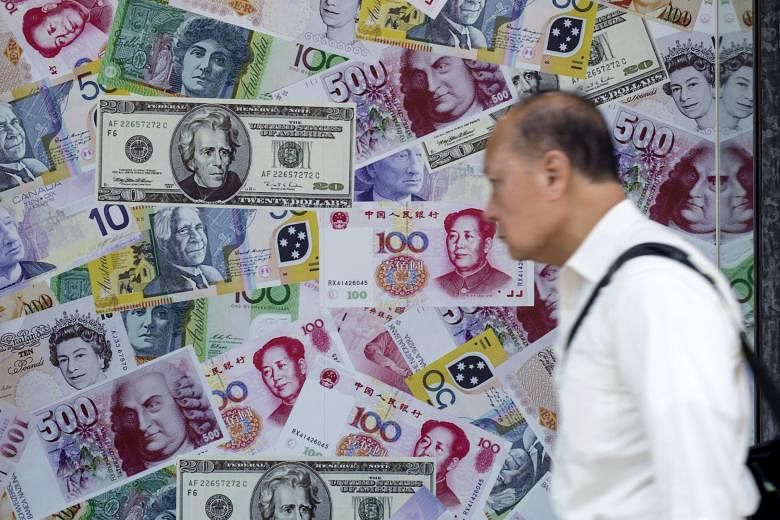SHANGHAI • The Chinese yuan flatlined yesterday, with the exchange rate barely budging and volumes low, as traders said a combination of soothing messages from regulators and buy orders from state banks kept the market in check.
The spot market opened at 6.3990 against the US dollar and changed hands at 6.3918 at market close, only 72 pips from the previous close and 0.09 per cent away from the midpoint. For the entire day, the yuan was in a tight range between 6.4050 and 6.3990.
"After a few days of volatility, the central bank appeared to want the yuan to show some stability for now, possibly also next week," said a trader at a major European bank in Shanghai.
The yuan is the new must-watch indicator for markets worldwide, with the power to move prices from Tokyo to London and Chicago.
People's Bank of China's (PBOC) daily fixing for the yuan, long overlooked by investors outside the country, had transformed into a global market-moving event after a devaluation on Tuesday took almost everyone by surprise.
For the next three days, it influenced everything from Asian currencies to commodities and US index futures, prompting traders around the world to change their schedules so they can react to the announcement that comes each day at 9.16am Hong Kong time.
"We are waking up early and all my friends have the yuan on the top of their screens," said Mr Dhiraj Bhutoria, a director at Kolkata-based Varun Tradecom.
After years as one of the least volatile major currencies, the yuan tumbled the most since 1994 on Tuesday after China allowed market forces to have more influence. Where the currency goes from here will have an impact not only on the growth prospects for Asia's largest economy, but also the Federal Reserve's interest rate policy and earnings of international companies, from Apple to BMW.
For the week, the currency posted a record loss of around 3 per cent.
This week's plunge in the yuan spurred the biggest two-day sell-off in Asian currencies since 1997 and drove a gauge of commodities to a 13-year low.
The US dollar weakened as investors speculated that the yuan's depreciation will sap inflation globally. Traders have pushed down the odds of a September rate increase by the Fed to about 40 per cent on Wednesday, from 54 per cent as recently as Aug 7, according to data compiled by Bloomberg.
For Mr Mark Matthews, head of Asia research and a managing director of Bank Julius Baer & Co in Singapore, the obsession with the yuan - also known as the renminbi - will wane as volatility ebbs.
"A month ago, everybody was focused on the Shanghai stock market, and a month before that, everybody was focused on Greece," he said. "Absolutely the first thing everybody looks at when they come in in the morning now is the renminbi. But will it be like that a month from now? I doubt it."
REUTERS, BLOOMBERG

